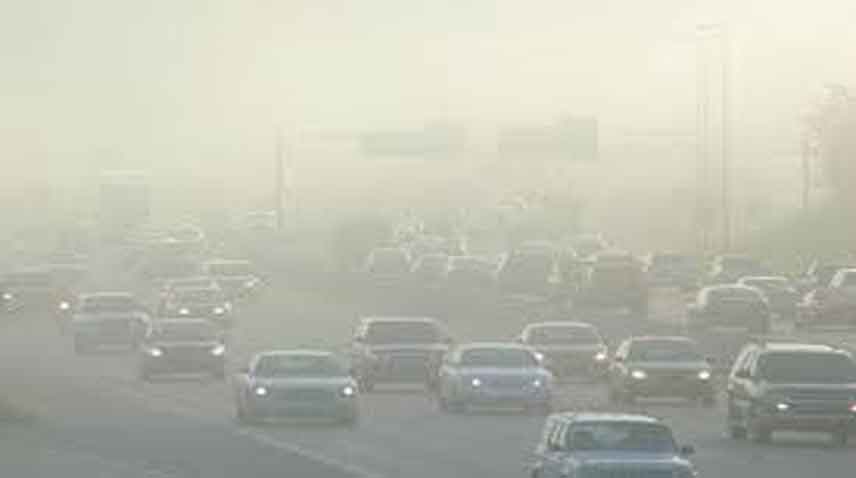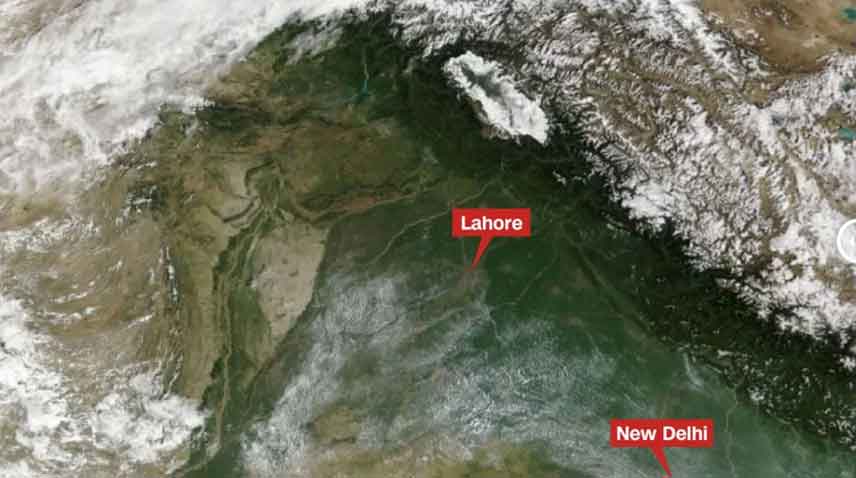
The acrid smog and low level of air quality in Pakistan prompted the authorities to close schools and public spaces as the hazardous smog affected health of tens of millions of citizens.
With the arrival of winter, pollution in the region increased with clouds of ominous yellow haze on account of combination of farmers burning agricultural residue, coal-fired power plants, traffic and windless days. As cold and dry air traps pollution particles, the air quality worsens in the winter
The air quality index in parts of Punjab has crossed 1,000 multiple times in the past week, according to IQAir. A reading above 300 is considered hazardous to health, CNN quoted.

In Multan, a city in the Punjab, the reading reached most dangerous level, recorded at more than 110 times higher than safe levels set by the World Health Organization.
The combustion of fossil fuels, dust storms and wildfires, are the major sources of pollution which bring about asthma, heart and lung disease, cancer, and other respiratory illnesses, as well as cognitive impairment in children.
Hospitals and clinics in Pakistan have become inundated with patients suffering from the effects of pollution. According to health officials, more than 30,000 people have been treated for respiratory ailments in smog-hit districts, according to the Associated Press.
As per Pakistan’s Environmental Protection Agency, in the districts of Faisalabad, Multan and Gujranwala, “an unprecedented rise in the number of patients with lung and respiratory diseases, allergies, eye and throat irritation.”
As the schools and government offices had already been ordered to close until November 17, Punjab government closed all parks, playgrounds, museums, zoos and historical sites in various districts for ten days, and banned all outdoor activities.
The aim of the fresh restrictions is to keep people at home and avoid unnecessary travel that could put their health at risk.
Khuram Gondal, Save the Children Pakistan’s country director said as well as disrupting their education, “air pollution and hotter temperatures are leading to life-threatening dangers for children, including difficulty breathing and higher risk of infectious diseases.”
Under the measures to address the chronic issue, officials in Punjab drafted a letter to the Indian government to initiate a dialogue on the issue.
Punjab Secretary for Environment and Climate Change Raja Jahangir Anwar told CNN there was a need for “climate diplomacy, as a regional and global issue.”
A report of the BMJ revealed that millions of people die each year from air pollution-related health issues. Air pollution from fossil fuels kills 5.1 million people worldwide every year. Meanwhile, WHO says 6.7 million people perish annually from the combined effects of ambient and household air pollution.
The scientists said that climate crisis would only make pollution worse as extreme heat became more severe. Climate change is changing weather patterns, leading to changes in wind and rainfall, which also cause dispersion of pollutants.




